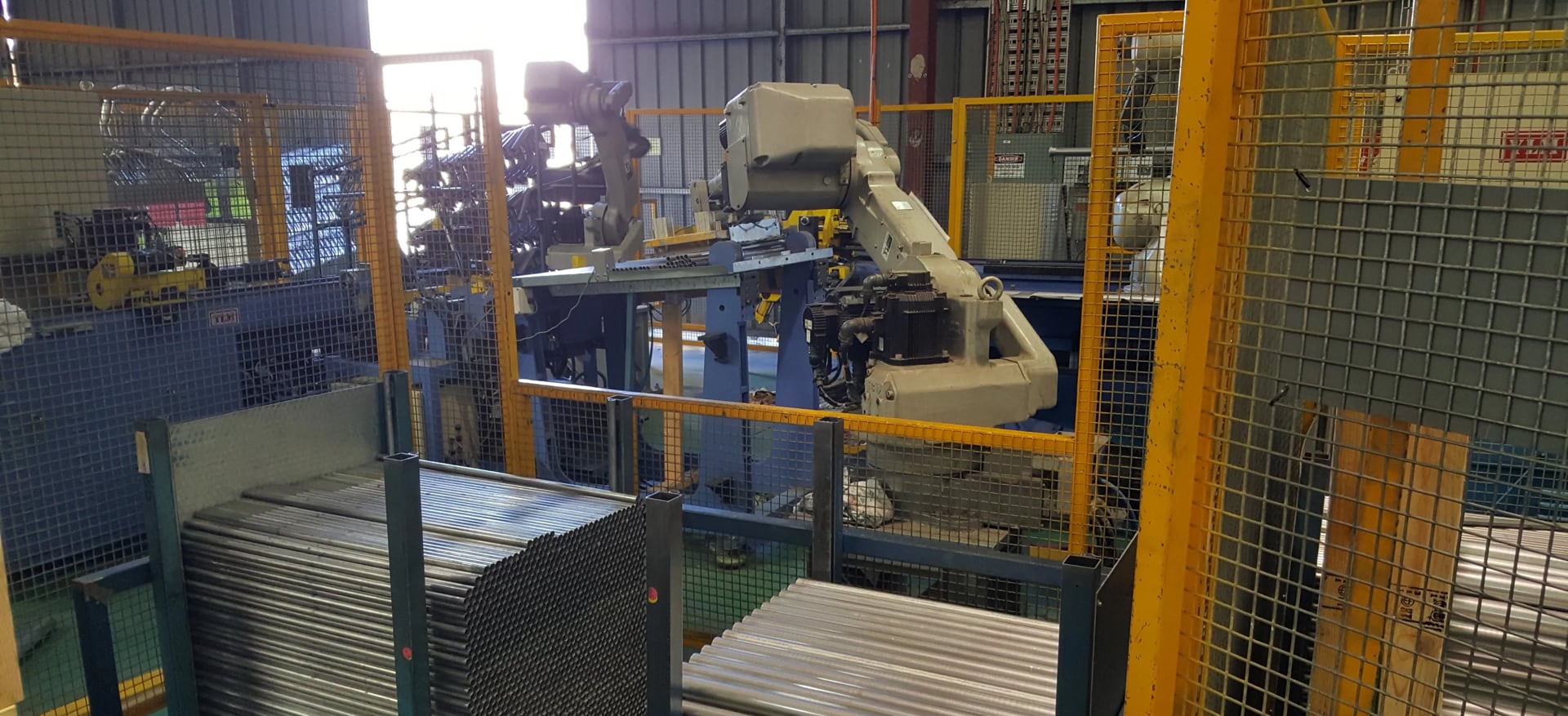Robot Bending Cell Project
We were approached by a leading global manufacturer to assist them in reducing costs associated with the internal pipework for the various models of heating/cooling equipment they manufacture.
The clients main objective was to remove the need for offshoring the supply of multiple versions of galvanised pipe, with custom shapes and dimensions.
This client wanted to simplify their operations and bring this function in house to reduce expenses, allowing them to buy precut lengths of piping in bulk and customising their shape and other such qualities accordingly.
This resulted in sourcing stand-alone machinery required to perform the individual tasks involved in amending the attributes of the bulk sourced pipe and create a three part system that would carry out unique attributes.

The innovation controlling this setup is a Programmable Logic Controller that can function as a set of decision centers. It’s initially installed to connect with the machines and communicate between them.
With the machinery positioned systematically by the customer, we enclosed the area with fencing and access gates to ensure a safe work environment. This also led to the examination across the interface wiring taken back to a main control panel whilst taking into consideration any safety circuits that would be tied into a seperate programmable safety controller.
The controller became split up into separate parts, allowing sections within the production line to come to a complete stop. The motive behind adding this feature was to allow the ability to add and remove completed parts whilst enhancing the efficiency and safety of the process.
The system was a success and can now easily provide a throughput of parts to meet the needs of production. It is simply loaded with pallets of bulk straight pipe and then shaped parts are removed via trolleys at the operator’s discretion.
The project itself gained the interest of the NSW premier to the extent a plaque was fixed to the machine on his behalf. In conjunction with our customer we were able to automate a process, remove a third-party cost and reduce production overheads significantly.